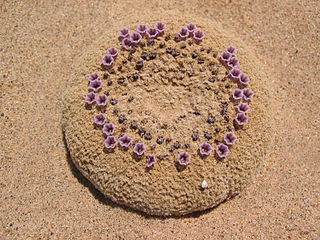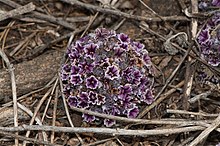
Boraginaceae, the borage or forget-me-notfamily, includes about 2,000 species of shrubs, trees, and herbs in 146 to 156 genera with a worldwide distribution.

Leporidae is the family of rabbits and hares, containing over 70 species of extant mammals in all. The Latin word Leporidae means "those that resemble lepus" (hare). Together with the pikas, the Leporidae constitute the mammalian order Lagomorpha. Leporidae differ from pikas in that they have short, furry tails and elongated ears and hind legs.

Cobra is the common name of various snakes, most of which belong to the genus Naja.

The Iguanidae is a family of lizards composed of the iguanas, chuckwallas, and their prehistoric relatives, including the widespread green iguana.

The Lacertidae are the family of the wall lizards, true lizards, or sometimes simply lacertas, which are native to Afro-Eurasia. It is a diverse family with at about 360 species in 39 genera. They represent the dominant group of reptiles found in Europe.

The desert lark breeds in deserts and semi-deserts from Morocco to western India. It has a very wide distribution and faces no obvious threats, and surveys have shown that it is slowly increasing in numbers as it expands its range. The International Union for Conservation of Nature has rated its conservation status as being of "least concern".

Lycium is a genus of flowering plants in the nightshade family, Solanaceae. The genus has a disjunct distribution around the globe, with species occurring on most continents in temperate and subtropical regions. South America has the most species, followed by North America and southern Africa. There are several scattered across Europe and Asia, and one is native to Australia. Common English names for plants of this genus include box-thorn and desert-thorn.

The Sechuran fox, also called the Peruvian desert fox or the Sechuran zorro, is a small South American species of canid closely related to other South American "false" foxes or zorro. It gets its name for being found in the Sechura Desert in northwestern Peru.

Pholisma sonorae, commonly known as sandfood, is a rare and unusual species of flowering plant endemic to the Sonoran Deserts to the west of Yuma, Arizona in the California Yuha, Mojave Desert and Colorado Desert, and south in the Yuma Desert, where it is known from only a few locations.

The genus Eligmodontia consists of five or six species of South American sigmodontine mice restricted to Bolivia, Chile, and Argentina. Species of Eligmodontia occur along the eastern side of the Andes Mountains, in Patagonia, and in the Chaco thorn forest of South America. They can be found in arid and semiarid habitats and in both high and low elevation areas. These rodents are commonly known as gerbil mice or by their local name lauchas. Sometimes they are also called silky desert mice, highland desert mice or silky-footed mice. The closest living relatives are probably the chaco mice (Andalgalomys), the leaf-eared mice, and Salinomys.

Lennooideae is a subfamily of parasitic flowering plants of southwestern North America and northwestern South America.

Phacochoerus is a genus in the family Suidae, commonly known as warthogs. They are pigs who live in open and semi-open habitats, even in quite arid regions, in sub-Saharan Africa. The two species were formerly considered conspecific under the scientific name Phacochoerus aethiopicus, but today this is limited to the desert warthog, while the best-known and most widespread species, the common warthog, is Phacochoerus africanus.
Elsornis is a genus of enantiornithine bird. Only one species is known, Elsornis keni. It lived during the Late Cretaceous. It is known from a partially articulated fossil skeleton found in the Gobi Desert in Mongolia.

Fouquieria is a genus of 11 species of desert plants, the sole genus in the family Fouquieriaceae. The genus includes the ocotillo and the Boojum tree or cirio. They have semisucculent stems with thinner spikes projecting from them, with leaves on the bases spikes. They are unrelated to cacti and do not look much like them; their stems are proportionately thinner than cactus stems and their leaves are larger.
Eriogonum deserticola is a species of wild buckwheat known by the common name Colorado Desert buckwheat.

Pholisma arenarium is a species of flowering plant in the borage family known by several common names, including desert Christmas tree, scaly-stemmed sand plant, and purple sand food. As the name implies, the loaf-like part of the root is edible. It is native to northwestern Mexico, Arizona and southern California, where it grows in many habitat types, including desert, chaparral, and sandy coastal dunes. It is a fleshy perennial herb taking a compact cylindrical or ovate shape up to 20 or 30 centimeters tall above ground, often with part of the stem below the sandy surface. It is a parasitic plant growing on the roots or of various shrubs such as burrobush, Yerba Santa, California croton, rabbitbrush, and ragweeds. As a heterotroph which derives its nutrients from other plants, it lacks chlorophyll and is brownish-gray or whitish in color. There are hairy, glandular, pointed leaves along the surface of the plant. Flowers emerge between them, each roughly one centimeter wide, the rounded corolla lavender to deep or bright purple with a white margin.
Bonnie Carolyn Templeton was an American botanist. She served as curator of botany for the Natural History Museum of Los Angeles County from 1929 to 1970, a time when women in science were uncommon.

Paraechinus is a genus of hedgehogs. Members are small and nocturnal. The genus contains four species from North Africa, the Middle East and South Asia:
The Turkestani long-eared bat is a species of bat found in Asia. Though it was initially described in 1873 as a species, for many years it was considered synonymous with the desert long-eared bat, Otonycteris hemprichii. Recently, it was recognized as a distinct species once again.

Afrocygnus is an extinct genus of swan, which lived during the Late Miocene, and perhaps up to the Late Pliocene, in what is today North Africa. The only genus of swan known in Africa, aside from fragmentary Pleistocene remains found in East Africa and from occasional observations of vagrant European swans along the Mediterranean coast, it lived in what was during the Miocene a damp wetland spanning from Libya to Chad, alongside the Antracothere Libycosaurus and the early Homininae Sahelanthropus. The genus is considered as the sister taxon of the extant genus Cygnus. Fossils of the genus have been uncovered in the Sahabi Formation of Cyrenaica in Libya, and in the Toros-Menalla locality in the Djurab Desert of Northern Chad.
















